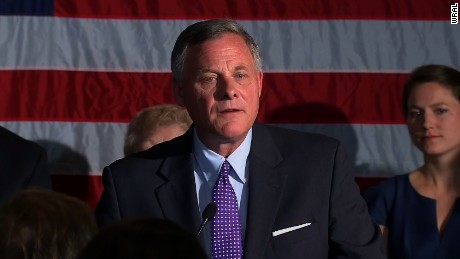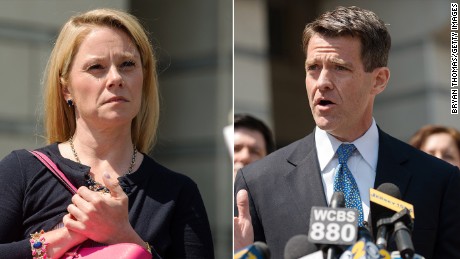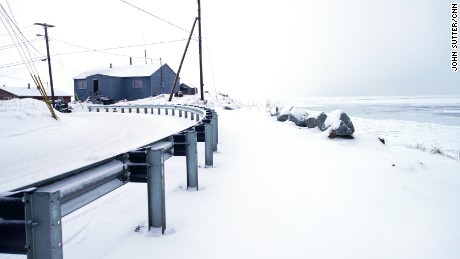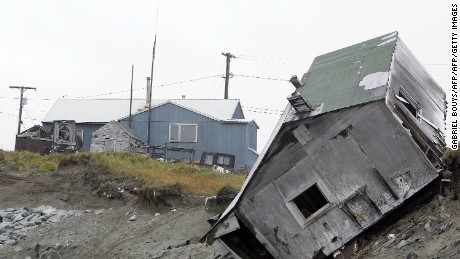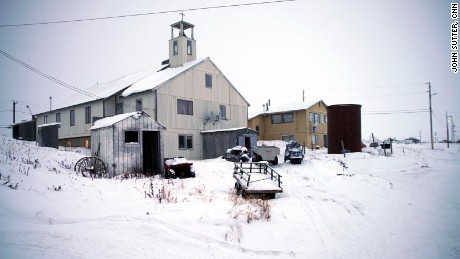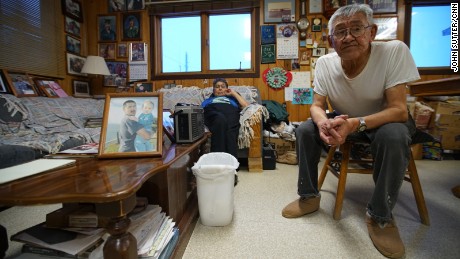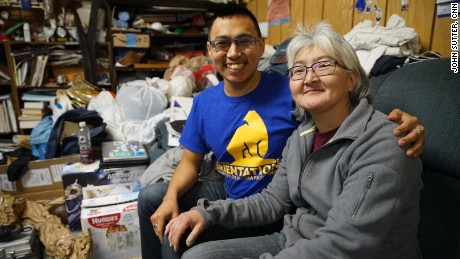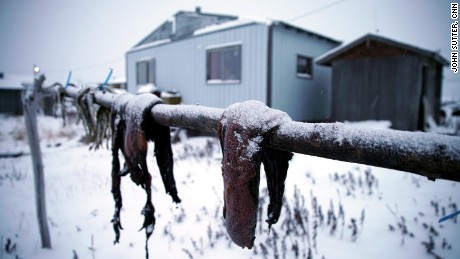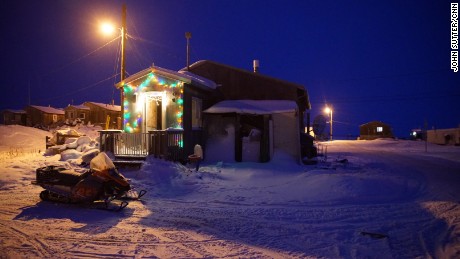‘);$vidEndSlate.removeClass(‘video__end-slate–inactive’).addClass(‘video__end-slate–active’);}};CNN.autoPlayVideoExist = (CNN.autoPlayVideoExist === true) ? true : false;var configObj = {thumb: ‘none’,video: ‘us/2017/03/29/holocaust-survivor-exchange-immigration-forum-sot.kovr’,width: ‘100%’,height: ‘100%’,section: ‘domestic’,profile: ‘expansion’,network: ‘cnn’,markupId: ‘large-media_0’,adsection: ‘const-video-leaf’,frameWidth: ‘100%’,frameHeight: ‘100%’,posterImageOverride: {“mini”:{“height”:124,”width”:220,”type”:”jpg”,”uri”:”//i2.cdn.cnn.com/cnnnext/dam/assets/170329115343-holocaust-survivor-bernard-marks-forum-small-169.jpg”},”xsmall”:{“height”:173,”width”:307,”type”:”jpg”,”uri”:”//i2.cdn.cnn.com/cnnnext/dam/assets/170329115343-holocaust-survivor-bernard-marks-forum-medium-plus-169.jpg”},”small”:{“height”:259,”width”:460,”type”:”jpg”,”uri”:”//i2.cdn.cnn.com/cnnnext/dam/assets/170329115343-holocaust-survivor-bernard-marks-forum-large-169.jpg”},”medium”:{“height”:438,”width”:780,”type”:”jpg”,”uri”:”//i2.cdn.cnn.com/cnnnext/dam/assets/170329115343-holocaust-survivor-bernard-marks-forum-exlarge-169.jpg”},”large”:{“height”:619,”width”:1100,”type”:”jpg”,”uri”:”//i2.cdn.cnn.com/cnnnext/dam/assets/170329115343-holocaust-survivor-bernard-marks-forum-super-169.jpg”},”full16x9″:{“height”:900,”width”:1600,”type”:”jpg”,”uri”:”//i2.cdn.cnn.com/cnnnext/dam/assets/170329115343-holocaust-survivor-bernard-marks-forum-full-169.jpg”},”mini1x1″:{“height”:120,”width”:120,”type”:”jpg”,”uri”:”//i2.cdn.cnn.com/cnnnext/dam/assets/170329115343-holocaust-survivor-bernard-marks-forum-small-11.jpg”}}},autoStartVideo = false,callbackObj,containerEl,currentVideoCollection = [{“videoCMSUrl”:”/videos/us/2017/03/29/holocaust-survivor-exchange-immigration-forum-sot.kovr”,”videoId”:”us/2017/03/29/holocaust-survivor-exchange-immigration-forum-sot.kovr”,”videoUrl”:”/videos/us/2017/03/29/holocaust-survivor-exchange-immigration-forum-sot.kovr”},{“videoCMSUrl”:”/video/data/3.0/video/cnnmoney/2017/03/29/sean-spicer-april-ryan-reset-nr-sot.cnn/index.xml”,”videoId”:”cnnmoney/2017/03/29/sean-spicer-april-ryan-reset-nr-sot.cnn”,”videoUrl”:”/videos/cnnmoney/2017/03/29/sean-spicer-april-ryan-reset-nr-sot.cnn/video/playlists/stories-worth-watching/”},{“videoCMSUrl”:”/video/data/3.0/video/cnnmoney/2017/03/29/waters-im-a-strong-black-woman-orig-mobile-tc.cnn/index.xml”,”videoId”:”cnnmoney/2017/03/29/waters-im-a-strong-black-woman-orig-mobile-tc.cnn”,”videoUrl”:”/videos/cnnmoney/2017/03/29/waters-im-a-strong-black-woman-orig-mobile-tc.cnn/video/playlists/stories-worth-watching/”},{“videoCMSUrl”:”/video/data/3.0/video/cnnmoney/2017/03/29/sean-spicer-april-ryan-comments-panel-spars-sot-update.cnn/index.xml”,”videoId”:”cnnmoney/2017/03/29/sean-spicer-april-ryan-comments-panel-spars-sot-update.cnn”,”videoUrl”:”/videos/cnnmoney/2017/03/29/sean-spicer-april-ryan-comments-panel-spars-sot-update.cnn/video/playlists/stories-worth-watching/”},{“videoCMSUrl”:”/video/data/3.0/video/cnnmoney/2017/03/29/ford-michigan-donald-trump-mark-fields-cnnmoney.cnnmoney/index.xml”,”videoId”:”cnnmoney/2017/03/29/ford-michigan-donald-trump-mark-fields-cnnmoney.cnnmoney”,”videoUrl”:”/videos/cnnmoney/2017/03/29/ford-michigan-donald-trump-mark-fields-cnnmoney.cnnmoney/video/playlists/stories-worth-watching/”},{“videoCMSUrl”:”/video/data/3.0/video/cnnmoney/2017/03/28/bill-oreilly-maxine-waters-fox-and-friends-cnnmoneu.fox-news/index.xml”,”videoId”:”cnnmoney/2017/03/28/bill-oreilly-maxine-waters-fox-and-friends-cnnmoneu.fox-news”,”videoUrl”:”/videos/cnnmoney/2017/03/28/bill-oreilly-maxine-waters-fox-and-friends-cnnmoneu.fox-news/video/playlists/stories-worth-watching/”},{“videoCMSUrl”:”/video/data/3.0/video/cnnmoney/2017/03/28/adele-might-quit-touring-orig-vstan.cnn/index.xml”,”videoId”:”cnnmoney/2017/03/28/adele-might-quit-touring-orig-vstan.cnn”,”videoUrl”:”/videos/cnnmoney/2017/03/28/adele-might-quit-touring-orig-vstan.cnn/video/playlists/stories-worth-watching/”},{“videoCMSUrl”:”/video/data/3.0/video/cnnmoney/2017/03/28/is-facebook-turning-into-snapchat-cnnmoney.cnn/index.xml”,”videoId”:”cnnmoney/2017/03/28/is-facebook-turning-into-snapchat-cnnmoney.cnn”,”videoUrl”:”/videos/cnnmoney/2017/03/28/is-facebook-turning-into-snapchat-cnnmoney.cnn/video/playlists/stories-worth-watching/”},{“videoCMSUrl”:”/video/data/3.0/video/cnnmoney/2017/03/28/recreational-marijuana-las-vegas-strip-cnnmoney.cnnmoney/index.xml”,”videoId”:”cnnmoney/2017/03/28/recreational-marijuana-las-vegas-strip-cnnmoney.cnnmoney”,”videoUrl”:”/videos/cnnmoney/2017/03/28/recreational-marijuana-las-vegas-strip-cnnmoney.cnnmoney/video/playlists/stories-worth-watching/”},{“videoCMSUrl”:”/video/data/3.0/video/cnnmoney/2017/03/28/steve-mnuchin-lego-batman-controversy-es-sot.cnn/index.xml”,”videoId”:”cnnmoney/2017/03/28/steve-mnuchin-lego-batman-controversy-es-sot.cnn”,”videoUrl”:”/videos/cnnmoney/2017/03/28/steve-mnuchin-lego-batman-controversy-es-sot.cnn/video/playlists/stories-worth-watching/”},{“videoCMSUrl”:”/video/data/3.0/video/cnnmoney/2017/03/27/bulletproof-clothing.cnnmoney/index.xml”,”videoId”:”cnnmoney/2017/03/27/bulletproof-clothing.cnnmoney”,”videoUrl”:”/videos/cnnmoney/2017/03/27/bulletproof-clothing.cnnmoney/video/playlists/stories-worth-watching/”},{“videoCMSUrl”:”/video/data/3.0/video/cnnmoney/2017/03/26/republicans-seek-unity-democrats-health-care-change-orig-llr.cnn/index.xml”,”videoId”:”cnnmoney/2017/03/26/republicans-seek-unity-democrats-health-care-change-orig-llr.cnn”,”videoUrl”:”/videos/cnnmoney/2017/03/26/republicans-seek-unity-democrats-health-care-change-orig-llr.cnn/video/playlists/stories-worth-watching/”},{“videoCMSUrl”:”/video/data/3.0/video/cnnmoney/2017/03/24/ripcord-robot-ai-scan-sort-digitize-paper-cnnmoney.cnnmoney/index.xml”,”videoId”:”cnnmoney/2017/03/24/ripcord-robot-ai-scan-sort-digitize-paper-cnnmoney.cnnmoney”,”videoUrl”:”/videos/cnnmoney/2017/03/24/ripcord-robot-ai-scan-sort-digitize-paper-cnnmoney.cnnmoney/video/playlists/stories-worth-watching/”},{“videoCMSUrl”:”/video/data/3.0/video/cnnmoney/2017/03/26/electronics-ban-the-scene-at-the-airport-cnnmoney.cnn-money/index.xml”,”videoId”:”cnnmoney/2017/03/26/electronics-ban-the-scene-at-the-airport-cnnmoney.cnn-money”,”videoUrl”:”/videos/cnnmoney/2017/03/26/electronics-ban-the-scene-at-the-airport-cnnmoney.cnn-money/video/playlists/stories-worth-watching/”},{“videoCMSUrl”:”/video/data/3.0/video/cnnmoney/2017/03/25/alexis-ohanian-serena-williams.cnn/index.xml”,”videoId”:”cnnmoney/2017/03/25/alexis-ohanian-serena-williams.cnn”,”videoUrl”:”/videos/cnnmoney/2017/03/25/alexis-ohanian-serena-williams.cnn/video/playlists/stories-worth-watching/”},{“videoCMSUrl”:”/video/data/3.0/video/cnnmoney/2017/03/17/lamborghini-suv-off-road.cnn/index.xml”,”videoId”:”cnnmoney/2017/03/17/lamborghini-suv-off-road.cnn”,”videoUrl”:”/videos/cnnmoney/2017/03/17/lamborghini-suv-off-road.cnn/video/playlists/stories-worth-watching/”}],currentVideoCollectionId = ”,isLivePlayer = false,moveToNextTimeout,mutePlayerEnabled = false,nextVideoId = ”,nextVideoUrl = ”,turnOnFlashMessaging = false,videoPinner,videoEndSlateImpl;if (CNN.autoPlayVideoExist === false) {autoStartVideo = true;if (autoStartVideo === true) {if (turnOnFlashMessaging === true) {autoStartVideo = false;containerEl = jQuery(document.getElementById(configObj.markupId));CNN.VideoPlayer.showFlashSlate(containerEl);} else {CNN.autoPlayVideoExist = true;}}}configObj.autostart = autoStartVideo;CNN.VideoPlayer.setPlayerProperties(configObj.markupId, autoStartVideo, isLivePlayer, mutePlayerEnabled);CNN.VideoPlayer.setFirstVideoInCollection(currentVideoCollection, configObj.markupId);var embedLinkHandler = {},videoPinner,embedCodeCopy;function onVideoCarouselItemClicked(evt) {‘use strict’;var videoId,articleElem,videoPlayer,thumbImageElem,thumbImageLargeSource,overrides = {videoCollection: this.videoCollection,autostart: false},shouldStartVideo = false,playerInstance;try {articleElem = jQuery(evt.currentTarget).find(‘article’);thumbImageElem = jQuery(articleElem).find(‘.media__image’);videoId = articleElem.data().videoId;if (CNN.VideoPlayer.getLibraryName(configObj.markupId) === ‘fave’) {playerInstance = FAVE.player.getInstance(configObj.markupId);if (CNN.Utils.existsObject(playerInstance) &&typeof playerInstance.getVideoData === ‘function’ &&playerInstance.getVideoData().id !== videoId) {/* Remove videoobject metadata script.If the user click other than initial loaded video */jQuery(articleElem).closest(‘.cn-carousel-medium-strip’).parent().find(‘script[name=”metaScript”]’).remove();playerInstance.play(videoId, overrides);}} else {videoPlayer = CNNVIDEOAPI.CNNVideoManager.getInstance().getPlayerByContainer(configObj.markupId);if (videoPlayer && videoPlayer.videoInstance) {/** if videoPlayer.videoInstance.cvp is null that means it’s not initialized yet so* pass in the thumbnail, too.*/if (!videoPlayer.videoInstance.cvp) {if (typeof thumbImageElem !== ‘undefined’ && thumbImageElem !== null) {thumbImageLargeSource = thumbImageElem.data() && thumbImageElem.data().srcLarge ? thumbImageElem.data().srcLarge : ‘none’;}overrides.thumb = thumbImageLargeSource ? thumbImageLargeSource : ‘none’;shouldStartVideo = true;}if (videoPlayer.videoInstance.config) {if (videoPlayer.videoInstance.config.video !== videoId) {/* Remove videoobject metadata script.If the user click other than initial loaded video */jQuery(articleElem).closest(‘.cn-carousel-medium-strip’).parent().find(‘script[name=”metaScript”]’).remove();CNNVIDEOAPI.CNNVideoManager.getInstance().playVideo(configObj.markupId, videoId, overrides);}/* Video player isn’t autoplay, so init itif (shouldStartVideo && this.carouselClickAutostartsVideo) {try {videoPlayer.videoInstance.start();} catch (startError) {console.log(“error in initializing video player” + startError);}}*/}}}} catch (error) {console.log(“error in initializing video player” + error);}}function setInitialVideoEmbed() {}function initialize(){var carousel = jQuery(document.getElementById(‘cn-current_video_collection’)).find(‘.js-owl-carousel’),owl;if (carousel) {carousel.find(‘.cn__column.carousel__content__item’).find(‘a’).removeAttr(‘href’);jQuery(carousel).on(‘click’, ‘.cn__column.carousel__content__item’, onVideoCarouselItemClicked);}}if (CNN.VideoPlayer.getLibraryName(configObj.markupId) === ‘videoLoader’) {window.CNNVideoAPILoadCompleteHandlers = window.CNNVideoAPILoadCompleteHandlers ? window.CNNVideoAPILoadCompleteHandlers : [];window.CNNVideoAPILoadCompleteHandlers.push(initialize);window.CNNVideoAPILoadCompleteHandlers.push(setInitialVideoEmbed);} else {initialize();}CNN.INJECTOR.executeFeature(‘videx’).done(function () {var initMeta = {id:”us/2017/03/29/holocaust-survivor-exchange-immigration-forum-sot.kovr”, isEmbeddable: “no”};CNN.Videx.EmbedButton.updateCode(initMeta);}).fail(function () {throw ‘Unable to fetch the videx bundle.’;});function updateCurrentlyPlaying(videoId) {var videoCollectionId = ‘current_video_collection’,videocardContents = getCurrentVideoCardContents(videoId),carousel = jQuery(document.getElementById(‘cn-current_video_collection’)).find(‘.js-owl-carousel’),domain = CNN.Host.domain || (document.location.protocol + ‘//’ + document.location.hostname),owl,$owlFirstItem,$owlPrevItem,showDetailsSpanContent = ”,gigyaShareElement,showIndex,whatsappShareElement,$carouselContentItems = jQuery(‘.carousel__content__item’, document.getElementById(‘cn-current_video_collection’));gigyaShareElement = jQuery(‘div.js-gigya-sharebar’);if (typeof gigyaShareElement !== ‘undefined’) {jQuery(gigyaShareElement).attr(‘data-title’, videocardContents.headlinePlainText || ”);jQuery(gigyaShareElement).attr(‘data-description’, videocardContents.descriptionPlainText || ”);jQuery(gigyaShareElement).attr(‘data-link’, domain + videocardContents.url || ”);jQuery(gigyaShareElement).attr(‘data-image-src’, videocardContents.media.elementContents.imageUrl || ”);}whatsappShareElement = jQuery(‘div.share-bar-whatsapp-container’);if (typeof whatsappShareElement !== ‘undefined’) {jQuery(whatsappShareElement).attr(‘data-title’, videocardContents.headlinePlainText || ”);jQuery(whatsappShareElement).attr(‘data-storyurl’, domain + videocardContents.url || ”);}if (carousel && currentVideoCollectionContainsId(videoId)) {owl = carousel.data(‘owl.carousel’) || {};showIndex = getCurrentVideoIndex(videoId);if (typeof owl.to === ‘function’) {owl.to(showIndex);}$owlPrevItem = CNN.Utils.exists(owl.$element) ? owl.$element.find(‘.cd.cd–active’) : $carouselContentItems.find(‘.cd.cd–active’);$owlPrevItem.removeClass(‘cd–active’);$owlPrevItem.find(‘.media__over-text’).remove();$owlPrevItem.find(‘.media__icon’).show();$owlFirstItem = CNN.Utils.exists(owl._items) ? jQuery(owl._items[showIndex]) : $carouselContentItems.eq(showIndex);$owlFirstItem.find(‘.cd’).addClass(‘cd–active’);$owlFirstItem.find(‘.media a:first-child’).append(‘
Now Playing
‘);if (Modernizr && !Modernizr.phone) {$owlFirstItem.find(‘.media__icon’).hide();}}CNN.Videx.Metadata.init({dateCreated: videocardContents.dateCreated,descriptionText: videocardContents.descriptionText,duration: videocardContents.duration,sourceLink: videocardContents.sourceLink,sourceName: videocardContents.sourceName,title: videocardContents.headlineText},{videoCollectionDivId: ‘cn-10epjk8’,videoDescriptionDivId: ‘js-video_description-10epjk8’,videoDurationDivId: ‘js-video_duration-10epjk8’,videoTitleDivId: ‘js-leaf-video_headline-10epjk8’,videoSourceDivId: ‘js-video_sourceName-10epjk8’});if (CNN.Utils.exists(videocardContents.showName)) {if (CNN.Utils.exists(videocardContents.showUrl)) {showDetailsSpanContent = ‘‘ + videocardContents.showName + ‘ | ‘;} else {showDetailsSpanContent = videocardContents.showName + ‘ | ‘;}}fastdom.measure(function getShowInfo() {var $show = jQuery(‘.metadata__show’),$isShowDetailsSpanExists = $show.find(‘span’).hasClass(‘metadata–show__name’),$showName = jQuery(‘.metadata–show__name’);fastdom.mutate(function updateShowInfo() {if (!$isShowDetailsSpanExists) {$show.prepend(‘‘ + showDetailsSpanContent + ‘‘);} else {$showName.html(showDetailsSpanContent);}});});if (typeof (history) !== ‘undefined’ && typeof (history.replaceState) !== ‘undefined’) {history.replaceState(”, ”, videocardContents.url);document.title = videocardContents.headlineText ? videocardContents.headlineText : ”;}}function getCurrentVideoCardContents(currentVideoId) {var containerContents = [{“branding”:””,”cardContents”:{“auxiliaryText”:””,”bannerText”:[],”bannerHasATag”:false,”bannerPosition”:””,”brandingLink”:””,”brandingImageUrl”:””,”brandingTextHead”:””,”brandingTextSub”:””,”cardSectionName”:””,”contentType”:””,”cta”:”share”,”descriptionText”:[“Sacramento resident Bernard Marks, a Holocaust survivor, had some pointed words for Sheriff Scott Jones and acting US Immigration and Customs Enforcement Director Thomas Homan during a contentious immigration forum.”],”descriptionPlainText”:”Sacramento resident Bernard Marks, a Holocaust survivor, had some pointed words for Sheriff Scott Jones and acting US Immigration and Customs Enforcement Director Thomas Homan during a contentious immigration forum.”,”headlinePostText”:””,”headlinePreText”:””,”headlineText”:”Holocaust survivor has tough words for sheriff”,”headlinePlainText”:”Holocaust survivor has tough words for sheriff”,”iconImageUrl”:””,”iconType”:”video”,”isMobileBannerText”:false,”kickerText”:””,”maximizedBannerSize”:[],”media”:{“contentType”:”image”,”type”:”element”,”cutFormat”:”16:9″,”elementContents”:{“caption”:”Holocaust survivor bernard marks forum”,”imageAlt”:”Holocaust survivor bernard marks forum”,”imageUrl”:”//i2.cdn.cnn.com/cnnnext/dam/assets/170329115343-holocaust-survivor-bernard-marks-forum-large-169.jpg”,”label”:””,”galleryTitle”:””,”head”:””,”cuts”:{“mini”:{“height”:124,”width”:220,”type”:”jpg”,”uri”:”//i2.cdn.cnn.com/cnnnext/dam/assets/170329115343-holocaust-survivor-bernard-marks-forum-small-169.jpg”},”xsmall”:{“height”:173,”width”:307,”type”:”jpg”,”uri”:”//i2.cdn.cnn.com/cnnnext/dam/assets/170329115343-holocaust-survivor-bernard-marks-forum-medium-plus-169.jpg”},”small”:{“height”:259,”width”:460,”type”:”jpg”,”uri”:”//i2.cdn.cnn.com/cnnnext/dam/assets/170329115343-holocaust-survivor-bernard-marks-forum-large-169.jpg”},”medium”:{“height”:438,”width”:780,”type”:”jpg”,”uri”:”//i2.cdn.cnn.com/cnnnext/dam/assets/170329115343-holocaust-survivor-bernard-marks-forum-exlarge-169.jpg”},”large”:{“height”:619,”width”:1100,”type”:”jpg”,”uri”:”//i2.cdn.cnn.com/cnnnext/dam/assets/170329115343-holocaust-survivor-bernard-marks-forum-super-169.jpg”},”full16x9″:{“height”:900,”width”:1600,”type”:”jpg”,”uri”:”//i2.cdn.cnn.com/cnnnext/dam/assets/170329115343-holocaust-survivor-bernard-marks-forum-full-169.jpg”},”mini1x1″:{“height”:120,”width”:120,”type”:”jpg”,”uri”:”//i2.cdn.cnn.com/cnnnext/dam/assets/170329115343-holocaust-survivor-bernard-marks-forum-small-11.jpg”}},”responsiveImage”:true}},”noFollow”:false,”overMediaText”:””,”sectionUri”:””,”showSocialSharebar”:false,”shortUrl”:””,”statusText”:””,”statusColor”:””,”targetType”:””,”timestampDisplay”:””,”timestampUtc”:””,”lastModifiedText”:””,”lastModifiedState”:””,”type”:”card”,”url”:”/videos/us/2017/03/29/holocaust-survivor-exchange-immigration-forum-sot.kovr”,”width”:””,”height”:””,”videoCMSUri”:”/videos/us/2017/03/29/holocaust-survivor-exchange-immigration-forum-sot.kovr”,”videoId”:”us/2017/03/29/holocaust-survivor-exchange-immigration-forum-sot.kovr”,”adSection”:”const-video-leaf”,”dateCreated”:”8:20 AM ET, Wed March 29, 2017″,”sourceName”:”KOVR”,”sourceLink”:”http://sacramento.cbslocal.com/”},”contentType”:”video”,”maximizedBanner”:false,”type”:”card”},{“branding”:””,”cardContents”:{“auxiliaryText”:””,”bannerText”:[],”bannerHasATag”:false,”bannerPosition”:””,”brandingLink”:””,”brandingImageUrl”:””,”brandingTextHead”:””,”brandingTextSub”:””,”cardSectionName”:”cnnmoney”,”contentType”:””,”cta”:”share”,”descriptionText”:[“White House Press Secretary Sean Spicer and correspondent April Ryan have a moment of relief one day after a \u003ca href=\”http://www.cnn.com/2017/03/28/politics/sean-spicer-russian-dressing/index.html\”>tense exchange\u003c/a>.”,””],”descriptionPlainText”:”White House Press Secretary Sean Spicer and correspondent April Ryan have a moment of relief one day after a tense exchange.”,”headlinePostText”:””,”headlinePreText”:””,”headlineText”:”Spicer, reporter all smiles day after clash”,”headlinePlainText”:”Spicer, reporter all smiles day after clash”,”iconImageUrl”:””,”iconType”:”video”,”isMobileBannerText”:false,”kickerText”:””,”maximizedBannerSize”:[],”media”:{“contentType”:”image”,”type”:”element”,”cutFormat”:”16:9″,”elementContents”:{“caption”:””,”imageAlt”:””,”imageUrl”:”//i2.cdn.cnn.com/cnnnext/dam/assets/170329112951-mobapp-aprilryan-seanspicer-split-large-169.jpg”,”label”:””,”galleryTitle”:””,”head”:””,”cuts”:{“mini”:{“height”:124,”width”:220,”type”:”jpg”,”uri”:”//i2.cdn.cnn.com/cnnnext/dam/assets/170329112951-mobapp-aprilryan-seanspicer-split-small-169.jpg”},”xsmall”:{“height”:173,”width”:307,”type”:”jpg”,”uri”:”//i2.cdn.cnn.com/cnnnext/dam/assets/170329112951-mobapp-aprilryan-seanspicer-split-medium-plus-169.jpg”},”small”:{“height”:259,”width”:460,”type”:”jpg”,”uri”:”//i2.cdn.cnn.com/cnnnext/dam/assets/170329112951-mobapp-aprilryan-seanspicer-split-large-169.jpg”},”medium”:{“height”:438,”width”:780,”type”:”jpg”,”uri”:”//i2.cdn.cnn.com/cnnnext/dam/assets/170329112951-mobapp-aprilryan-seanspicer-split-exlarge-169.jpg”},”large”:{“height”:619,”width”:1100,”type”:”jpg”,”uri”:”//i2.cdn.cnn.com/cnnnext/dam/assets/170329112951-mobapp-aprilryan-seanspicer-split-super-169.jpg”},”full16x9″:{“height”:900,”width”:1600,”type”:”jpg”,”uri”:”//i2.cdn.cnn.com/cnnnext/dam/assets/170329112951-mobapp-aprilryan-seanspicer-split-full-169.jpg”},”mini1x1″:{“height”:120,”width”:120,”type”:”jpg”,”uri”:”//i2.cdn.cnn.com/cnnnext/dam/assets/170329112951-mobapp-aprilryan-seanspicer-split-small-11.jpg”}},”responsiveImage”:true},”duration”:”1:34″},”noFollow”:false,”overMediaText”:””,”sectionUri”:””,”showSocialSharebar”:false,”shortUrl”:””,”statusText”:””,”statusColor”:””,”targetType”:””,”timestampDisplay”:””,”timestampUtc”:””,”lastModifiedText”:”2 h”,”lastModifiedState”:””,”type”:”card”,”url”:”/videos/cnnmoney/2017/03/29/sean-spicer-april-ryan-reset-nr-sot.cnn/video/playlists/stories-worth-watching/”,”width”:””,”height”:””,”videoCMSUri”:”/video/data/3.0/video/cnnmoney/2017/03/29/sean-spicer-april-ryan-reset-nr-sot.cnn/index.xml”,”videoId”:”cnnmoney/2017/03/29/sean-spicer-april-ryan-reset-nr-sot.cnn”,”adSection”:”const-video-leaf”,”dateCreated”:”3:01 PM ET, Wed March 29, 2017″,”sourceName”:”CNN”,”sourceLink”:”http://www.cnn.com”,”videoCollectionUrl”:”/video/playlists/stories-worth-watching/”},”contentType”:”video”,”maximizedBanner”:false,”type”:”card”},{“branding”:””,”cardContents”:{“auxiliaryText”:””,”bannerText”:[],”bannerHasATag”:false,”bannerPosition”:””,”brandingLink”:””,”brandingImageUrl”:””,”brandingTextHead”:””,”brandingTextSub”:””,”cardSectionName”:”cnnmoney”,”contentType”:””,”cta”:”share”,”descriptionText”:[“Rep. Maxine Waters responds to Bill O’Reilly’s comments about her hair style.”],”descriptionPlainText”:”Rep. Maxine Waters responds to Bill O’Reilly’s comments about her hair style.”,”headlinePostText”:””,”headlinePreText”:””,”headlineText”:”Rep. Maxine Waters fires back at O’Reilly “,”headlinePlainText”:”Rep. Maxine Waters fires back at O’Reilly “,”iconImageUrl”:””,”iconType”:”video”,”isMobileBannerText”:false,”kickerText”:””,”maximizedBannerSize”:[],”media”:{“contentType”:”image”,”type”:”element”,”cutFormat”:”16:9″,”elementContents”:{“caption”:””,”imageAlt”:””,”imageUrl”:”//i2.cdn.cnn.com/cnnnext/dam/assets/170328114020-bill-oreilly-maxine-waters-large-169.jpg”,”label”:””,”galleryTitle”:””,”head”:””,”cuts”:{“mini”:{“height”:124,”width”:220,”type”:”jpg”,”uri”:”//i2.cdn.cnn.com/cnnnext/dam/assets/170328114020-bill-oreilly-maxine-waters-small-169.jpg”},”xsmall”:{“height”:173,”width”:307,”type”:”jpg”,”uri”:”//i2.cdn.cnn.com/cnnnext/dam/assets/170328114020-bill-oreilly-maxine-waters-medium-plus-169.jpg”},”small”:{“height”:259,”width”:460,”type”:”jpg”,”uri”:”//i2.cdn.cnn.com/cnnnext/dam/assets/170328114020-bill-oreilly-maxine-waters-large-169.jpg”},”medium”:{“height”:438,”width”:780,”type”:”jpg”,”uri”:”//i2.cdn.cnn.com/cnnnext/dam/assets/170328114020-bill-oreilly-maxine-waters-exlarge-169.jpg”},”large”:{“height”:619,”width”:1100,”type”:”jpg”,”uri”:”//i2.cdn.cnn.com/cnnnext/dam/assets/170328114020-bill-oreilly-maxine-waters-super-169.jpg”},”full16x9″:{“height”:900,”width”:1600,”type”:”jpg”,”uri”:”//i2.cdn.cnn.com/cnnnext/dam/assets/170328114020-bill-oreilly-maxine-waters-full-169.jpg”},”mini1x1″:{“height”:120,”width”:120,”type”:”jpg”,”uri”:”//i2.cdn.cnn.com/cnnnext/dam/assets/170328114020-bill-oreilly-maxine-waters-small-11.jpg”}},”responsiveImage”:true},”duration”:”0:56″},”noFollow”:false,”overMediaText”:””,”sectionUri”:””,”showSocialSharebar”:false,”shortUrl”:””,”statusText”:””,”statusColor”:””,”targetType”:””,”timestampDisplay”:””,”timestampUtc”:””,”lastModifiedText”:”3 h”,”lastModifiedState”:””,”type”:”card”,”url”:”/videos/cnnmoney/2017/03/29/waters-im-a-strong-black-woman-orig-mobile-tc.cnn/video/playlists/stories-worth-watching/”,”width”:””,”height”:””,”videoCMSUri”:”/video/data/3.0/video/cnnmoney/2017/03/29/waters-im-a-strong-black-woman-orig-mobile-tc.cnn/index.xml”,”videoId”:”cnnmoney/2017/03/29/waters-im-a-strong-black-woman-orig-mobile-tc.cnn”,”adSection”:”const-video-leaf”,”dateCreated”:”9:57 AM ET, Wed March 29, 2017″,”sourceName”:”CNN”,”sourceLink”:””,”videoCollectionUrl”:”/video/playlists/stories-worth-watching/”},”contentType”:”video”,”maximizedBanner”:false,”type”:”card”},{“branding”:””,”cardContents”:{“auxiliaryText”:””,”bannerText”:[],”bannerHasATag”:false,”bannerPosition”:””,”brandingLink”:””,”brandingImageUrl”:””,”brandingTextHead”:””,”brandingTextSub”:””,”cardSectionName”:”cnnmoney”,”contentType”:””,”cta”:”share”,”descriptionText”:[“During CNN Tonight with \u003ca href=\”http://www.cnn.com/profiles/don-lemon-profile\”>Don Lemon\u003c/a>, commentators spar over the heated confrontation between White House Press Secretary Sean Spicer and reporter April Ryan.”],”descriptionPlainText”:”During CNN Tonight with Don Lemon, commentators spar over the heated confrontation between White House Press Secretary Sean Spicer and reporter April Ryan.”,”headlinePostText”:””,”headlinePreText”:””,”headlineText”:”CNN panelists spar over Sean Spicer comment”,”headlinePlainText”:”CNN panelists spar over Sean Spicer comment”,”iconImageUrl”:””,”iconType”:”video”,”isMobileBannerText”:false,”kickerText”:””,”maximizedBannerSize”:[],”media”:{“contentType”:”image”,”type”:”element”,”cutFormat”:”16:9″,”elementContents”:{“caption”:”angela rye ctn”,”imageAlt”:”angela rye ctn”,”imageUrl”:”//i2.cdn.cnn.com/cnnnext/dam/assets/170329002304-angela-rye-ctn-large-169.jpg”,”label”:””,”galleryTitle”:””,”head”:””,”cuts”:{“mini”:{“height”:124,”width”:220,”type”:”jpg”,”uri”:”//i2.cdn.cnn.com/cnnnext/dam/assets/170329002304-angela-rye-ctn-small-169.jpg”},”xsmall”:{“height”:173,”width”:307,”type”:”jpg”,”uri”:”//i2.cdn.cnn.com/cnnnext/dam/assets/170329002304-angela-rye-ctn-medium-plus-169.jpg”},”small”:{“height”:259,”width”:460,”type”:”jpg”,”uri”:”//i2.cdn.cnn.com/cnnnext/dam/assets/170329002304-angela-rye-ctn-large-169.jpg”},”medium”:{“height”:438,”width”:780,”type”:”jpg”,”uri”:”//i2.cdn.cnn.com/cnnnext/dam/assets/170329002304-angela-rye-ctn-exlarge-169.jpg”},”large”:{“height”:619,”width”:1100,”type”:”jpg”,”uri”:”//i2.cdn.cnn.com/cnnnext/dam/assets/170329002304-angela-rye-ctn-super-169.jpg”},”full16x9″:{“height”:900,”width”:1600,”type”:”jpg”,”uri”:”//i2.cdn.cnn.com/cnnnext/dam/assets/170329002304-angela-rye-ctn-full-169.jpg”},”mini1x1″:{“height”:120,”width”:120,”type”:”jpg”,”uri”:”//i2.cdn.cnn.com/cnnnext/dam/assets/170329002304-angela-rye-ctn-small-11.jpg”}},”responsiveImage”:true},”duration”:”1:57″},”noFollow”:false,”overMediaText”:””,”sectionUri”:””,”showSocialSharebar”:false,”shortUrl”:””,”statusText”:””,”statusColor”:””,”targetType”:””,”timestampDisplay”:””,”timestampUtc”:””,”lastModifiedText”:””,”lastModifiedState”:””,”type”:”card”,”url”:”/videos/cnnmoney/2017/03/29/sean-spicer-april-ryan-comments-panel-spars-sot-update.cnn/video/playlists/stories-worth-watching/”,”width”:””,”height”:””,”videoCMSUri”:”/video/data/3.0/video/cnnmoney/2017/03/29/sean-spicer-april-ryan-comments-panel-spars-sot-update.cnn/index.xml”,”videoId”:”cnnmoney/2017/03/29/sean-spicer-april-ryan-comments-panel-spars-sot-update.cnn”,”adSection”:”const-video-leaf”,”dateCreated”:”10:07 AM ET, Wed March 29, 2017″,”sourceName”:”CNN”,”sourceLink”:”http://www.cnn.com”,”showName”:”CNN Tonight”,”showUrl”:”/shows/cnn-tonight”,”videoCollectionUrl”:”/video/playlists/stories-worth-watching/”},”contentType”:”video”,”maximizedBanner”:false,”type”:”card”},{“branding”:””,”cardContents”:{“auxiliaryText”:””,”bannerText”:[],”bannerHasATag”:false,”bannerPosition”:””,”brandingLink”:””,”brandingImageUrl”:””,”brandingTextHead”:””,”brandingTextSub”:””,”cardSectionName”:”cnnmoney”,”contentType”:””,”cta”:”share”,”descriptionText”:[“President Trump and Ford had a volatile relationship before the election. Since then, the automaker’s hiring plans have changed, prompting praise from the president.”],”descriptionPlainText”:”President Trump and Ford had a volatile relationship before the election. Since then, the automaker’s hiring plans have changed, prompting praise from the president.”,”headlinePostText”:””,”headlinePreText”:””,”headlineText”:”Trump’s evolving relationship with Ford”,”headlinePlainText”:”Trump’s evolving relationship with Ford”,”iconImageUrl”:””,”iconType”:”video”,”isMobileBannerText”:false,”kickerText”:””,”maximizedBannerSize”:[],”media”:{“contentType”:”image”,”type”:”element”,”cutFormat”:”16:9″,”elementContents”:{“caption”:”Donald Trump”,”imageAlt”:”Donald Trump”,”imageUrl”:”//i2.cdn.cnn.com/cnnnext/dam/assets/170328200632-donald-trump-large-169.jpg”,”label”:””,”galleryTitle”:””,”head”:””,”cuts”:{“mini”:{“height”:124,”width”:220,”type”:”jpg”,”uri”:”//i2.cdn.cnn.com/cnnnext/dam/assets/170328200632-donald-trump-small-169.jpg”},”xsmall”:{“height”:173,”width”:307,”type”:”jpg”,”uri”:”//i2.cdn.cnn.com/cnnnext/dam/assets/170328200632-donald-trump-medium-plus-169.jpg”},”small”:{“height”:259,”width”:460,”type”:”jpg”,”uri”:”//i2.cdn.cnn.com/cnnnext/dam/assets/170328200632-donald-trump-large-169.jpg”},”medium”:{“height”:438,”width”:780,”type”:”jpg”,”uri”:”//i2.cdn.cnn.com/cnnnext/dam/assets/170328200632-donald-trump-exlarge-169.jpg”},”large”:{“height”:619,”width”:1100,”type”:”jpg”,”uri”:”//i2.cdn.cnn.com/cnnnext/dam/assets/170328200632-donald-trump-super-169.jpg”},”full16x9″:{“height”:900,”width”:1600,”type”:”jpg”,”uri”:”//i2.cdn.cnn.com/cnnnext/dam/assets/170328200632-donald-trump-full-169.jpg”},”mini1x1″:{“height”:120,”width”:120,”type”:”jpg”,”uri”:”//i2.cdn.cnn.com/cnnnext/dam/assets/170328200632-donald-trump-small-11.jpg”}},”responsiveImage”:true},”duration”:”1:28″},”noFollow”:false,”overMediaText”:””,”sectionUri”:””,”showSocialSharebar”:false,”shortUrl”:””,”statusText”:””,”statusColor”:””,”targetType”:””,”timestampDisplay”:””,”timestampUtc”:””,”lastModifiedText”:””,”lastModifiedState”:””,”type”:”card”,”url”:”/videos/cnnmoney/2017/03/29/ford-michigan-donald-trump-mark-fields-cnnmoney.cnnmoney/video/playlists/stories-worth-watching/”,”width”:””,”height”:””,”videoCMSUri”:”/video/data/3.0/video/cnnmoney/2017/03/29/ford-michigan-donald-trump-mark-fields-cnnmoney.cnnmoney/index.xml”,”videoId”:”cnnmoney/2017/03/29/ford-michigan-donald-trump-mark-fields-cnnmoney.cnnmoney”,”adSection”:”const-video-leaf”,”dateCreated”:”7:32 AM ET, Wed March 29, 2017″,”sourceName”:”CNNMoney”,”sourceLink”:”http://www.money.cnn.com”,”videoCollectionUrl”:”/video/playlists/stories-worth-watching/”},”contentType”:”video”,”maximizedBanner”:false,”type”:”card”},{“branding”:””,”cardContents”:{“auxiliaryText”:””,”bannerText”:[],”bannerHasATag”:false,”bannerPosition”:””,”brandingLink”:””,”brandingImageUrl”:””,”brandingTextHead”:””,”brandingTextSub”:””,”cardSectionName”:”cnnmoney”,”contentType”:””,”cta”:”share”,”descriptionText”:[“The Fox News host came under fire on Twitter after making remarks that were regarded as racist and sexist about Representative Waters’ hair.”],”descriptionPlainText”:”The Fox News host came under fire on Twitter after making remarks that were regarded as racist and sexist about Representative Waters’ hair.”,”headlinePostText”:””,”headlinePreText”:””,”headlineText”:”O’Reilly under fire for Rep. Waters comments”,”headlinePlainText”:”O’Reilly under fire for Rep. Waters comments”,”iconImageUrl”:””,”iconType”:”video”,”isMobileBannerText”:false,”kickerText”:””,”maximizedBannerSize”:[],”media”:{“contentType”:”image”,”type”:”element”,”cutFormat”:”16:9″,”elementContents”:{“caption”:””,”imageAlt”:””,”imageUrl”:”//i2.cdn.cnn.com/cnnnext/dam/assets/170328114020-bill-oreilly-maxine-waters-large-169.jpg”,”label”:””,”galleryTitle”:””,”head”:””,”cuts”:{“mini”:{“height”:124,”width”:220,”type”:”jpg”,”uri”:”//i2.cdn.cnn.com/cnnnext/dam/assets/170328114020-bill-oreilly-maxine-waters-small-169.jpg”},”xsmall”:{“height”:173,”width”:307,”type”:”jpg”,”uri”:”//i2.cdn.cnn.com/cnnnext/dam/assets/170328114020-bill-oreilly-maxine-waters-medium-plus-169.jpg”},”small”:{“height”:259,”width”:460,”type”:”jpg”,”uri”:”//i2.cdn.cnn.com/cnnnext/dam/assets/170328114020-bill-oreilly-maxine-waters-large-169.jpg”},”medium”:{“height”:438,”width”:780,”type”:”jpg”,”uri”:”//i2.cdn.cnn.com/cnnnext/dam/assets/170328114020-bill-oreilly-maxine-waters-exlarge-169.jpg”},”large”:{“height”:619,”width”:1100,”type”:”jpg”,”uri”:”//i2.cdn.cnn.com/cnnnext/dam/assets/170328114020-bill-oreilly-maxine-waters-super-169.jpg”},”full16x9″:{“height”:900,”width”:1600,”type”:”jpg”,”uri”:”//i2.cdn.cnn.com/cnnnext/dam/assets/170328114020-bill-oreilly-maxine-waters-full-169.jpg”},”mini1x1″:{“height”:120,”width”:120,”type”:”jpg”,”uri”:”//i2.cdn.cnn.com/cnnnext/dam/assets/170328114020-bill-oreilly-maxine-waters-small-11.jpg”}},”responsiveImage”:true},”duration”:”1:05″},”noFollow”:false,”overMediaText”:””,”sectionUri”:””,”showSocialSharebar”:false,”shortUrl”:””,”statusText”:””,”statusColor”:””,”targetType”:””,”timestampDisplay”:””,”timestampUtc”:””,”lastModifiedText”:””,”lastModifiedState”:””,”type”:”card”,”url”:”/videos/cnnmoney/2017/03/28/bill-oreilly-maxine-waters-fox-and-friends-cnnmoneu.fox-news/video/playlists/stories-worth-watching/”,”width”:””,”height”:””,”videoCMSUri”:”/video/data/3.0/video/cnnmoney/2017/03/28/bill-oreilly-maxine-waters-fox-and-friends-cnnmoneu.fox-news/index.xml”,”videoId”:”cnnmoney/2017/03/28/bill-oreilly-maxine-waters-fox-and-friends-cnnmoneu.fox-news”,”adSection”:”const-video-leaf”,”dateCreated”:”3:04 PM ET, Tue March 28, 2017″,”sourceName”:”Fox News”,”sourceLink”:”http://www.money.cnn.com”,”videoCollectionUrl”:”/video/playlists/stories-worth-watching/”},”contentType”:”video”,”maximizedBanner”:false,”type”:”card”},{“branding”:””,”cardContents”:{“auxiliaryText”:””,”bannerText”:[],”bannerHasATag”:false,”bannerPosition”:””,”brandingLink”:””,”brandingImageUrl”:””,”brandingTextHead”:””,”brandingTextSub”:””,”cardSectionName”:”cnnmoney”,”contentType”:””,”cta”:”share”,”descriptionText”:[“British pop singer Adele told fans that she may not be touring anymore during a concert in Auckland, New Zealand.”],”descriptionPlainText”:”British pop singer Adele told fans that she may not be touring anymore during a concert in Auckland, New Zealand.”,”headlinePostText”:””,”headlinePreText”:””,”headlineText”:”Adele tells fans tour may be her last”,”headlinePlainText”:”Adele tells fans tour may be her last”,”iconImageUrl”:””,”iconType”:”video”,”isMobileBannerText”:false,”kickerText”:””,”maximizedBannerSize”:[],”media”:{“contentType”:”image”,”type”:”element”,”cutFormat”:”16:9″,”elementContents”:{“caption”:”LONDON, ENGLAND – MARCH 15: Singer Adele performs on stage at The O2 Arena on March 15, 2016 in London, England. (Photo by Gareth Cattermole/Getty Images)”,”imageAlt”:”LONDON, ENGLAND – MARCH 15: Singer Adele performs on stage at The O2 Arena on March 15, 2016 in London, England. (Photo by Gareth Cattermole/Getty Images)”,”imageUrl”:”//i2.cdn.cnn.com/cnnnext/dam/assets/170328113616-adele-o2-arena-large-169.jpg”,”label”:””,”galleryTitle”:””,”head”:””,”cuts”:{“mini”:{“height”:124,”width”:220,”type”:”jpg”,”uri”:”//i2.cdn.cnn.com/cnnnext/dam/assets/170328113616-adele-o2-arena-small-169.jpg”},”xsmall”:{“height”:173,”width”:307,”type”:”jpg”,”uri”:”//i2.cdn.cnn.com/cnnnext/dam/assets/170328113616-adele-o2-arena-medium-plus-169.jpg”},”small”:{“height”:259,”width”:460,”type”:”jpg”,”uri”:”//i2.cdn.cnn.com/cnnnext/dam/assets/170328113616-adele-o2-arena-large-169.jpg”},”medium”:{“height”:438,”width”:780,”type”:”jpg”,”uri”:”//i2.cdn.cnn.com/cnnnext/dam/assets/170328113616-adele-o2-arena-exlarge-169.jpg”},”large”:{“height”:619,”width”:1100,”type”:”jpg”,”uri”:”//i2.cdn.cnn.com/cnnnext/dam/assets/170328113616-adele-o2-arena-super-169.jpg”},”full16x9″:{“height”:900,”width”:1600,”type”:”jpg”,”uri”:”//i2.cdn.cnn.com/cnnnext/dam/assets/170328113616-adele-o2-arena-full-169.jpg”},”mini1x1″:{“height”:120,”width”:120,”type”:”jpg”,”uri”:”//i2.cdn.cnn.com/cnnnext/dam/assets/170328113616-adele-o2-arena-small-11.jpg”}},”responsiveImage”:true},”duration”:”0:50″},”noFollow”:false,”overMediaText”:””,”sectionUri”:””,”showSocialSharebar”:false,”shortUrl”:””,”statusText”:””,”statusColor”:””,”targetType”:””,”timestampDisplay”:””,”timestampUtc”:””,”lastModifiedText”:””,”lastModifiedState”:””,”type”:”card”,”url”:”/videos/cnnmoney/2017/03/28/adele-might-quit-touring-orig-vstan.cnn/video/playlists/stories-worth-watching/”,”width”:””,”height”:””,”videoCMSUri”:”/video/data/3.0/video/cnnmoney/2017/03/28/adele-might-quit-touring-orig-vstan.cnn/index.xml”,”videoId”:”cnnmoney/2017/03/28/adele-might-quit-touring-orig-vstan.cnn”,”adSection”:”const-video-leaf”,”dateCreated”:”11:15 AM ET, Tue March 28, 2017″,”sourceName”:”CNN”,”sourceLink”:”http://www.cnn.com”,”videoCollectionUrl”:”/video/playlists/stories-worth-watching/”},”contentType”:”video”,”maximizedBanner”:false,”type”:”card”},{“branding”:””,”cardContents”:{“auxiliaryText”:””,”bannerText”:[],”bannerHasATag”:false,”bannerPosition”:””,”brandingLink”:””,”brandingImageUrl”:””,”brandingTextHead”:””,”brandingTextSub”:””,”cardSectionName”:”cnnmoney”,”contentType”:””,”cta”:”share”,”descriptionText”:[“Facebook’s latest products imitate key features of Snapchat including filters, stories, and disappearing messages.”],”descriptionPlainText”:”Facebook’s latest products imitate key features of Snapchat including filters, stories, and disappearing messages.”,”headlinePostText”:””,”headlinePreText”:””,”headlineText”:”Is Facebook turning into Snapchat?”,”headlinePlainText”:”Is Facebook turning into Snapchat?”,”iconImageUrl”:””,”iconType”:”video”,”isMobileBannerText”:false,”kickerText”:””,”maximizedBannerSize”:[],”media”:{“contentType”:”image”,”type”:”element”,”cutFormat”:”16:9″,”elementContents”:{“caption”:”The Snapchat Inc. application (app) is seen on an on an Apple Inc. iPhone 5s displayed for a photograph in Washington, D.C., U.S., on Wednesday, Feb. 18, 2015. Snapchat Inc. is raising money that could value the company at as much as $19 billion. Photographer: Andrew Harrer/Bloomberg via Getty Images”,”imageAlt”:”The Snapchat Inc. application (app) is seen on an on an Apple Inc. iPhone 5s displayed for a photograph in Washington, D.C., U.S., on Wednesday, Feb. 18, 2015. Snapchat Inc. is raising money that could value the company at as much as $19 billion. Photographer: Andrew Harrer/Bloomberg via Getty Images”,”imageUrl”:”//i2.cdn.cnn.com/cnnnext/dam/assets/170328131545-snapchat-v-facebook-large-169.jpg”,”label”:””,”galleryTitle”:””,”head”:””,”cuts”:{“mini”:{“height”:124,”width”:220,”type”:”jpg”,”uri”:”//i2.cdn.cnn.com/cnnnext/dam/assets/170328131545-snapchat-v-facebook-small-169.jpg”},”xsmall”:{“height”:173,”width”:307,”type”:”jpg”,”uri”:”//i2.cdn.cnn.com/cnnnext/dam/assets/170328131545-snapchat-v-facebook-medium-plus-169.jpg”},”small”:{“height”:259,”width”:460,”type”:”jpg”,”uri”:”//i2.cdn.cnn.com/cnnnext/dam/assets/170328131545-snapchat-v-facebook-large-169.jpg”},”medium”:{“height”:438,”width”:780,”type”:”jpg”,”uri”:”//i2.cdn.cnn.com/cnnnext/dam/assets/170328131545-snapchat-v-facebook-exlarge-169.jpg”},”large”:{“height”:619,”width”:1100,”type”:”jpg”,”uri”:”//i2.cdn.cnn.com/cnnnext/dam/assets/170328131545-snapchat-v-facebook-super-169.jpg”},”full16x9″:{“height”:900,”width”:1600,”type”:”jpg”,”uri”:”//i2.cdn.cnn.com/cnnnext/dam/assets/170328131545-snapchat-v-facebook-full-169.jpg”},”mini1x1″:{“height”:120,”width”:120,”type”:”jpg”,”uri”:”//i2.cdn.cnn.com/cnnnext/dam/assets/170328131545-snapchat-v-facebook-small-11.jpg”}},”responsiveImage”:true},”duration”:”0:58″},”noFollow”:false,”overMediaText”:””,”sectionUri”:””,”showSocialSharebar”:false,”shortUrl”:””,”statusText”:””,”statusColor”:””,”targetType”:””,”timestampDisplay”:””,”timestampUtc”:””,”lastModifiedText”:””,”lastModifiedState”:””,”type”:”card”,”url”:”/videos/cnnmoney/2017/03/28/is-facebook-turning-into-snapchat-cnnmoney.cnn/video/playlists/stories-worth-watching/”,”width”:””,”height”:””,”videoCMSUri”:”/video/data/3.0/video/cnnmoney/2017/03/28/is-facebook-turning-into-snapchat-cnnmoney.cnn/index.xml”,”videoId”:”cnnmoney/2017/03/28/is-facebook-turning-into-snapchat-cnnmoney.cnn”,”adSection”:”const-video-leaf”,”dateCreated”:”1:12 PM ET, Tue March 28, 2017″,”sourceName”:”CNN”,”sourceLink”:”http://money.cnn.com/”,”videoCollectionUrl”:”/video/playlists/stories-worth-watching/”},”contentType”:”video”,”maximizedBanner”:false,”type”:”card”},{“branding”:””,”cardContents”:{“auxiliaryText”:””,”bannerText”:[],”bannerHasATag”:false,”bannerPosition”:””,”brandingLink”:””,”brandingImageUrl”:””,”brandingTextHead”:””,”brandingTextSub”:””,”cardSectionName”:”cnnmoney”,”contentType”:””,”cta”:”share”,”descriptionText”:[“Las Vegas may be known as Sin City, but you won’t find this newly legalized sin on the Strip: recreational marijuana. CNNMoney explains why.”],”descriptionPlainText”:”Las Vegas may be known as Sin City, but you won’t find this newly legalized sin on the Strip: recreational marijuana. CNNMoney explains why.”,”headlinePostText”:””,”headlinePreText”:””,”headlineText”:”You won’t find this vice on the Vegas Strip”,”headlinePlainText”:”You won’t find this vice on the Vegas Strip”,”iconImageUrl”:””,”iconType”:”video”,”isMobileBannerText”:false,”kickerText”:””,”maximizedBannerSize”:[],”media”:{“contentType”:”image”,”type”:”element”,”cutFormat”:”16:9″,”elementContents”:{“caption”:””,”imageAlt”:””,”imageUrl”:”//i2.cdn.cnn.com/cnnnext/dam/assets/170328082643-las-vegas-strip-casinos-large-169.png”,”label”:””,”galleryTitle”:””,”head”:””,”cuts”:{“mini”:{“height”:124,”width”:220,”type”:”jpg”,”uri”:”//i2.cdn.cnn.com/cnnnext/dam/assets/170328082643-las-vegas-strip-casinos-small-169.png”},”xsmall”:{“height”:173,”width”:307,”type”:”jpg”,”uri”:”//i2.cdn.cnn.com/cnnnext/dam/assets/170328082643-las-vegas-strip-casinos-medium-plus-169.png”},”small”:{“height”:259,”width”:460,”type”:”jpg”,”uri”:”//i2.cdn.cnn.com/cnnnext/dam/assets/170328082643-las-vegas-strip-casinos-large-169.png”},”medium”:{“height”:438,”width”:780,”type”:”jpg”,”uri”:”//i2.cdn.cnn.com/cnnnext/dam/assets/170328082643-las-vegas-strip-casinos-exlarge-169.png”},”large”:{“height”:619,”width”:1100,”type”:”jpg”,”uri”:”//i2.cdn.cnn.com/cnnnext/dam/assets/170328082643-las-vegas-strip-casinos-super-169.png”},”full16x9″:{“height”:900,”width”:1600,”type”:”jpg”,”uri”:”//i2.cdn.cnn.com/cnnnext/dam/assets/170328082643-las-vegas-strip-casinos-full-169.png”},”mini1x1″:{“height”:120,”width”:120,”type”:”jpg”,”uri”:”//i2.cdn.cnn.com/cnnnext/dam/assets/170328082643-las-vegas-strip-casinos-small-11.png”}},”responsiveImage”:true},”duration”:”2:40″},”noFollow”:false,”overMediaText”:””,”sectionUri”:””,”showSocialSharebar”:false,”shortUrl”:””,”statusText”:””,”statusColor”:””,”targetType”:””,”timestampDisplay”:””,”timestampUtc”:””,”lastModifiedText”:””,”lastModifiedState”:””,”type”:”card”,”url”:”/videos/cnnmoney/2017/03/28/recreational-marijuana-las-vegas-strip-cnnmoney.cnnmoney/video/playlists/stories-worth-watching/”,”width”:””,”height”:””,”videoCMSUri”:”/video/data/3.0/video/cnnmoney/2017/03/28/recreational-marijuana-las-vegas-strip-cnnmoney.cnnmoney/index.xml”,”videoId”:”cnnmoney/2017/03/28/recreational-marijuana-las-vegas-strip-cnnmoney.cnnmoney”,”adSection”:”const-video-leaf”,”dateCreated”:”8:24 AM ET, Tue March 28, 2017″,”sourceName”:”CNNMoney”,”sourceLink”:”http://www.money.cnn.com”,”videoCollectionUrl”:”/video/playlists/stories-worth-watching/”},”contentType”:”video”,”maximizedBanner”:false,”type”:”card”},{“branding”:””,”cardContents”:{“auxiliaryText”:””,”bannerText”:[],”bannerHasATag”:false,”bannerPosition”:””,”brandingLink”:””,”brandingImageUrl”:””,”brandingTextHead”:””,”brandingTextSub”:””,”cardSectionName”:”cnnmoney”,”contentType”:””,”cta”:”share”,”descriptionText”:[“Democratic Sen. Ron Wyden says Treasury Secretary Steve Mnuchin violated his ethics clause when he appeared to promote \”The Lego Batman Movie,\” a film for which he was an executive producer, during a recent interview.”],”descriptionPlainText”:”Democratic Sen. Ron Wyden says Treasury Secretary Steve Mnuchin violated his ethics clause when he appeared to promote \”The Lego Batman Movie,\” a film for which he was an executive producer, during a recent interview.”,”headlinePostText”:””,”headlinePreText”:””,”headlineText”:”Steve Mnuchin under fire for Lego movie plug”,”headlinePlainText”:”Steve Mnuchin under fire for Lego movie plug”,”iconImageUrl”:””,”iconType”:”video”,”isMobileBannerText”:false,”kickerText”:””,”maximizedBannerSize”:[],”media”:{“contentType”:”image”,”type”:”element”,”cutFormat”:”16:9″,”elementContents”:{“caption”:”Treasury Secretary nominee Steven Mnuchin waits after a meeting with Senator Orrin Hatch (R-UT) on Capitol Hill December 8, 2016 in Washington, DC. / AFP / Brendan Smialowski (Photo credit should read BRENDAN SMIALOWSKI/AFP/Getty Images)”,”imageAlt”:”Treasury Secretary nominee Steven Mnuchin waits after a meeting with Senator Orrin Hatch (R-UT) on Capitol Hill December 8, 2016 in Washington, DC. / AFP / Brendan Smialowski (Photo credit should read BRENDAN SMIALOWSKI/AFP/Getty Images)”,”imageUrl”:”//i2.cdn.cnn.com/cnnnext/dam/assets/170119084834-01-steven-mnuchin-large-169.jpg”,”label”:””,”galleryTitle”:””,”head”:””,”cuts”:{“mini”:{“height”:124,”width”:220,”type”:”jpg”,”uri”:”//i2.cdn.cnn.com/cnnnext/dam/assets/170119084834-01-steven-mnuchin-small-169.jpg”},”xsmall”:{“height”:173,”width”:307,”type”:”jpg”,”uri”:”//i2.cdn.cnn.com/cnnnext/dam/assets/170119084834-01-steven-mnuchin-medium-plus-169.jpg”},”small”:{“height”:259,”width”:460,”type”:”jpg”,”uri”:”//i2.cdn.cnn.com/cnnnext/dam/assets/170119084834-01-steven-mnuchin-large-169.jpg”},”medium”:{“height”:438,”width”:780,”type”:”jpg”,”uri”:”//i2.cdn.cnn.com/cnnnext/dam/assets/170119084834-01-steven-mnuchin-exlarge-169.jpg”},”large”:{“height”:619,”width”:1100,”type”:”jpg”,”uri”:”//i2.cdn.cnn.com/cnnnext/dam/assets/170119084834-01-steven-mnuchin-super-169.jpg”},”full16x9″:{“height”:900,”width”:1600,”type”:”jpg”,”uri”:”//i2.cdn.cnn.com/cnnnext/dam/assets/170119084834-01-steven-mnuchin-full-169.jpg”},”mini1x1″:{“height”:120,”width”:120,”type”:”jpg”,”uri”:”//i2.cdn.cnn.com/cnnnext/dam/assets/170119084834-01-steven-mnuchin-small-11.jpg”}},”responsiveImage”:true},”duration”:”1:14″},”noFollow”:false,”overMediaText”:””,”sectionUri”:””,”showSocialSharebar”:false,”shortUrl”:””,”statusText”:””,”statusColor”:””,”targetType”:””,”timestampDisplay”:””,”timestampUtc”:””,”lastModifiedText”:””,”lastModifiedState”:””,”type”:”card”,”url”:”/videos/cnnmoney/2017/03/28/steve-mnuchin-lego-batman-controversy-es-sot.cnn/video/playlists/stories-worth-watching/”,”width”:””,”height”:””,”videoCMSUri”:”/video/data/3.0/video/cnnmoney/2017/03/28/steve-mnuchin-lego-batman-controversy-es-sot.cnn/index.xml”,”videoId”:”cnnmoney/2017/03/28/steve-mnuchin-lego-batman-controversy-es-sot.cnn”,”adSection”:”const-video-leaf”,”dateCreated”:”4:20 AM ET, Tue March 28, 2017″,”sourceName”:”CNN”,”sourceLink”:”http://www.cnn.com”,”showName”:”Early Start”,”showUrl”:”/shows/early-start”,”videoCollectionUrl”:”/video/playlists/stories-worth-watching/”},”contentType”:”video”,”maximizedBanner”:false,”type”:”card”},{“branding”:””,”cardContents”:{“auxiliaryText”:””,”bannerText”:[],”bannerHasATag”:false,”bannerPosition”:””,”brandingLink”:””,”brandingImageUrl”:””,”brandingTextHead”:””,”brandingTextSub”:””,”cardSectionName”:”cnnmoney”,”contentType”:””,”cta”:”share”,”descriptionText”:[“For 25 years Miguel Caballero has been outfitting world leaders in his fashionable bulletproof clothing.”],”descriptionPlainText”:”For 25 years Miguel Caballero has been outfitting world leaders in his fashionable bulletproof clothing.”,”headlinePostText”:””,”headlinePreText”:””,”headlineText”:”Presidents wear these bulletproof clothes”,”headlinePlainText”:”Presidents wear these bulletproof clothes”,”iconImageUrl”:””,”iconType”:”video”,”isMobileBannerText”:false,”kickerText”:””,”maximizedBannerSize”:[],”media”:{“contentType”:”image”,”type”:”element”,”cutFormat”:”16:9″,”elementContents”:{“caption”:”bulletproof clothing_00000000.jpg”,”imageAlt”:”bulletproof clothing_00000000″,”imageUrl”:”//i2.cdn.cnn.com/cnnnext/dam/assets/170327172538-bulletproof-clothing-00000000-large-169.jpg”,”label”:””,”galleryTitle”:””,”head”:””,”cuts”:{“mini”:{“height”:124,”width”:220,”type”:”jpg”,”uri”:”//i2.cdn.cnn.com/cnnnext/dam/assets/170327172538-bulletproof-clothing-00000000-small-169.jpg”},”xsmall”:{“height”:173,”width”:307,”type”:”jpg”,”uri”:”//i2.cdn.cnn.com/cnnnext/dam/assets/170327172538-bulletproof-clothing-00000000-medium-plus-169.jpg”},”small”:{“height”:259,”width”:460,”type”:”jpg”,”uri”:”//i2.cdn.cnn.com/cnnnext/dam/assets/170327172538-bulletproof-clothing-00000000-large-169.jpg”},”medium”:{“height”:438,”width”:780,”type”:”jpg”,”uri”:”//i2.cdn.cnn.com/cnnnext/dam/assets/170327172538-bulletproof-clothing-00000000-exlarge-169.jpg”},”large”:{“height”:619,”width”:1100,”type”:”jpg”,”uri”:”//i2.cdn.cnn.com/cnnnext/dam/assets/170327172538-bulletproof-clothing-00000000-super-169.jpg”},”full16x9″:{“height”:900,”width”:1600,”type”:”jpg”,”uri”:”//i2.cdn.cnn.com/cnnnext/dam/assets/170327172538-bulletproof-clothing-00000000-full-169.jpg”},”mini1x1″:{“height”:120,”width”:120,”type”:”jpg”,”uri”:”//i2.cdn.cnn.com/cnnnext/dam/assets/170327172538-bulletproof-clothing-00000000-small-11.jpg”}},”responsiveImage”:true},”duration”:”2:29″},”noFollow”:false,”overMediaText”:””,”sectionUri”:””,”showSocialSharebar”:false,”shortUrl”:””,”statusText”:””,”statusColor”:””,”targetType”:””,”timestampDisplay”:””,”timestampUtc”:””,”lastModifiedText”:””,”lastModifiedState”:””,”type”:”card”,”url”:”/videos/cnnmoney/2017/03/27/bulletproof-clothing.cnnmoney/video/playlists/stories-worth-watching/”,”width”:””,”height”:””,”videoCMSUri”:”/video/data/3.0/video/cnnmoney/2017/03/27/bulletproof-clothing.cnnmoney/index.xml”,”videoId”:”cnnmoney/2017/03/27/bulletproof-clothing.cnnmoney”,”adSection”:”const-video-leaf”,”dateCreated”:”5:12 PM ET, Mon March 27, 2017″,”sourceName”:”CNNMoney”,”sourceLink”:””,”videoCollectionUrl”:”/video/playlists/stories-worth-watching/”},”contentType”:”video”,”maximizedBanner”:false,”type”:”card”},{“branding”:””,”cardContents”:{“auxiliaryText”:””,”bannerText”:[],”bannerHasATag”:false,”bannerPosition”:””,”brandingLink”:””,”brandingImageUrl”:””,”brandingTextHead”:””,”brandingTextSub”:””,”cardSectionName”:”cnnmoney”,”contentType”:””,”cta”:”share”,”descriptionText”:[“Republican lawmakers say it’s time to come together with Democrats to successfully reform health care.”],”descriptionPlainText”:”Republican lawmakers say it’s time to come together with Democrats to successfully reform health care.”,”headlinePostText”:””,”headlinePreText”:””,”headlineText”:”Republicans calling for unity with Democrats”,”headlinePlainText”:”Republicans calling for unity with Democrats”,”iconImageUrl”:””,”iconType”:”video”,”isMobileBannerText”:false,”kickerText”:””,”maximizedBannerSize”:[],”media”:{“contentType”:”image”,”type”:”element”,”cutFormat”:”16:9″,”elementContents”:{“caption”:”Inside the Capitol, the idea of changing the US measure of inflation is getting more attention.”,”imageAlt”:”Inside the Capitol, the idea of changing the US measure of inflation is getting more attention.”,”imageUrl”:”//i2.cdn.cnn.com/cnnnext/dam/assets/121213105958-cap-hill-beauty-shot-large-169.jpg”,”label”:””,”galleryTitle”:””,”head”:””,”cuts”:{“mini”:{“height”:124,”width”:220,”type”:”jpg”,”uri”:”//i2.cdn.cnn.com/cnnnext/dam/assets/121213105958-cap-hill-beauty-shot-small-169.jpg”},”xsmall”:{“height”:173,”width”:307,”type”:”jpg”,”uri”:”//i2.cdn.cnn.com/cnnnext/dam/assets/121213105958-cap-hill-beauty-shot-medium-plus-169.jpg”},”small”:{“height”:259,”width”:460,”type”:”jpg”,”uri”:”//i2.cdn.cnn.com/cnnnext/dam/assets/121213105958-cap-hill-beauty-shot-large-169.jpg”},”medium”:{“height”:438,”width”:780,”type”:”jpg”,”uri”:”//i2.cdn.cnn.com/cnnnext/dam/assets/121213105958-cap-hill-beauty-shot-exlarge-169.jpg”},”large”:{“height”:619,”width”:1100,”type”:”jpg”,”uri”:”//i2.cdn.cnn.com/cnnnext/dam/assets/121213105958-cap-hill-beauty-shot-super-169.jpg”},”full16x9″:{“height”:900,”width”:1600,”type”:”jpg”,”uri”:”//i2.cdn.cnn.com/cnnnext/dam/assets/121213105958-cap-hill-beauty-shot-full-169.jpg”},”mini1x1″:{“height”:120,”width”:120,”type”:”jpg”,”uri”:”//i2.cdn.cnn.com/cnnnext/dam/assets/121213105958-cap-hill-beauty-shot-small-11.jpg”}},”responsiveImage”:true},”duration”:”1:31″},”noFollow”:false,”overMediaText”:””,”sectionUri”:””,”showSocialSharebar”:false,”shortUrl”:””,”statusText”:””,”statusColor”:””,”targetType”:””,”timestampDisplay”:””,”timestampUtc”:””,”lastModifiedText”:””,”lastModifiedState”:””,”type”:”card”,”url”:”/videos/cnnmoney/2017/03/26/republicans-seek-unity-democrats-health-care-change-orig-llr.cnn/video/playlists/stories-worth-watching/”,”width”:””,”height”:””,”videoCMSUri”:”/video/data/3.0/video/cnnmoney/2017/03/26/republicans-seek-unity-democrats-health-care-change-orig-llr.cnn/index.xml”,”videoId”:”cnnmoney/2017/03/26/republicans-seek-unity-democrats-health-care-change-orig-llr.cnn”,”adSection”:”const-video-leaf”,”dateCreated”:”3:16 PM ET, Sun March 26, 2017″,”sourceName”:”CNN”,”sourceLink”:”http://www.cnn.com/”,”videoCollectionUrl”:”/video/playlists/stories-worth-watching/”},”contentType”:”video”,”maximizedBanner”:false,”type”:”card”},{“branding”:””,”cardContents”:{“auxiliaryText”:””,”bannerText”:[],”bannerHasATag”:false,”bannerPosition”:””,”brandingLink”:””,”brandingImageUrl”:””,”brandingTextHead”:””,”brandingTextSub”:””,”cardSectionName”:”cnnmoney”,”contentType”:””,”cta”:”share”,”descriptionText”:[“Ripcord is a new company, backed by Apple co-founder Steve Wozniak, that has created a robot to sort, scan, and digitize papers for businesses.”],”descriptionPlainText”:”Ripcord is a new company, backed by Apple co-founder Steve Wozniak, that has created a robot to sort, scan, and digitize papers for businesses.”,”headlinePostText”:””,”headlinePreText”:””,”headlineText”:”This robot could help companies go paperless”,”headlinePlainText”:”This robot could help companies go paperless”,”iconImageUrl”:””,”iconType”:”video”,”isMobileBannerText”:false,”kickerText”:””,”maximizedBannerSize”:[],”media”:{“contentType”:”image”,”type”:”element”,”cutFormat”:”16:9″,”elementContents”:{“caption”:””,”imageAlt”:””,”imageUrl”:”//i2.cdn.cnn.com/cnnnext/dam/assets/170324192813-ripcord-large-169.jpg”,”label”:””,”galleryTitle”:””,”head”:””,”cuts”:{“mini”:{“height”:124,”width”:220,”type”:”jpg”,”uri”:”//i2.cdn.cnn.com/cnnnext/dam/assets/170324192813-ripcord-small-169.jpg”},”xsmall”:{“height”:173,”width”:307,”type”:”jpg”,”uri”:”//i2.cdn.cnn.com/cnnnext/dam/assets/170324192813-ripcord-medium-plus-169.jpg”},”small”:{“height”:259,”width”:460,”type”:”jpg”,”uri”:”//i2.cdn.cnn.com/cnnnext/dam/assets/170324192813-ripcord-large-169.jpg”},”medium”:{“height”:438,”width”:780,”type”:”jpg”,”uri”:”//i2.cdn.cnn.com/cnnnext/dam/assets/170324192813-ripcord-exlarge-169.jpg”},”large”:{“height”:619,”width”:1100,”type”:”jpg”,”uri”:”//i2.cdn.cnn.com/cnnnext/dam/assets/170324192813-ripcord-super-169.jpg”},”full16x9″:{“height”:900,”width”:1600,”type”:”jpg”,”uri”:”//i2.cdn.cnn.com/cnnnext/dam/assets/170324192813-ripcord-full-169.jpg”},”mini1x1″:{“height”:120,”width”:120,”type”:”jpg”,”uri”:”//i2.cdn.cnn.com/cnnnext/dam/assets/170324192813-ripcord-small-11.jpg”}},”responsiveImage”:true},”duration”:”1:07″},”noFollow”:false,”overMediaText”:””,”sectionUri”:””,”showSocialSharebar”:false,”shortUrl”:””,”statusText”:””,”statusColor”:””,”targetType”:””,”timestampDisplay”:””,”timestampUtc”:””,”lastModifiedText”:””,”lastModifiedState”:””,”type”:”card”,”url”:”/videos/cnnmoney/2017/03/24/ripcord-robot-ai-scan-sort-digitize-paper-cnnmoney.cnnmoney/video/playlists/stories-worth-watching/”,”width”:””,”height”:””,”videoCMSUri”:”/video/data/3.0/video/cnnmoney/2017/03/24/ripcord-robot-ai-scan-sort-digitize-paper-cnnmoney.cnnmoney/index.xml”,”videoId”:”cnnmoney/2017/03/24/ripcord-robot-ai-scan-sort-digitize-paper-cnnmoney.cnnmoney”,”adSection”:”const-video-leaf”,”dateCreated”:”7:17 PM ET, Fri March 24, 2017″,”sourceName”:”CNNMoney”,”sourceLink”:”http://money.cnn.com/”,”videoCollectionUrl”:”/video/playlists/stories-worth-watching/”},”contentType”:”video”,”maximizedBanner”:false,”type”:”card”},{“branding”:””,”cardContents”:{“auxiliaryText”:””,”bannerText”:[],”bannerHasATag”:false,”bannerPosition”:””,”brandingLink”:””,”brandingImageUrl”:””,”brandingTextHead”:””,”brandingTextSub”:””,”cardSectionName”:”cnnmoney”,”contentType”:””,”cta”:”share”,”descriptionText”:[“Travelers in Istanbul, Turkey, flying to the US or the UK have started having to check large electronics.”],”descriptionPlainText”:”Travelers in Istanbul, Turkey, flying to the US or the UK have started having to check large electronics.”,”headlinePostText”:””,”headlinePreText”:””,”headlineText”:”Electronics ban: The scene at the airport”,”headlinePlainText”:”Electronics ban: The scene at the airport”,”iconImageUrl”:””,”iconType”:”video”,”isMobileBannerText”:false,”kickerText”:””,”maximizedBannerSize”:[],”media”:{“contentType”:”image”,”type”:”element”,”cutFormat”:”16:9″,”elementContents”:{“caption”:”A picture taken on 24 March 2016, in a Brucargo building in Steenokkerzeelas shows one of the luggages collected from the planes which were on the tarmac at the time of the attacks, two days after a triple bomb attack, claimed by the Islamic State group, hit Brussels’ airport and the Maelbeek – Maalbeek metro station, killing 31 people and wounding 270 others.Brussels is on maximum security alert with soldiers in camouflage standing guard outside embassies and government offices and underground rail services cut between 7:00 pm and 7:00 am, as Belgian authorities face growing pressure to do more to tackle the Islamic State menace threatening the continent, even as they scrambled to track down two more men over the attacks on Brussels airport and the metro. / AFP / BELGA / LAURIE DIEFFEMBACQ / Belgium OUT (Photo credit should read LAURIE DIEFFEMBACQ/AFP/Getty Images)”,”imageAlt”:”A picture taken on 24 March 2016, in a Brucargo building in Steenokkerzeelas shows one of the luggages collected from the planes which were on the tarmac at the time of the attacks, two days after a triple bomb attack, claimed by the Islamic State group, hit Brussels’ airport and the Maelbeek – Maalbeek metro station, killing 31 people and wounding 270 others.Brussels is on maximum security alert with soldiers in camouflage standing guard outside embassies and government offices and underground rail services cut between 7:00 pm and 7:00 am, as Belgian authorities face growing pressure to do more to tackle the Islamic State menace threatening the continent, even as they scrambled to track down two more men over the attacks on Brussels airport and the metro. / AFP / BELGA / LAURIE DIEFFEMBACQ / Belgium OUT (Photo credit should read LAURIE DIEFFEMBACQ/AFP/Getty Images)”,”imageUrl”:”//i2.cdn.cnn.com/cnnnext/dam/assets/170326181519-airport-ban-on-luggage-large-169.jpg”,”label”:””,”galleryTitle”:””,”head”:””,”cuts”:{“mini”:{“height”:124,”width”:220,”type”:”jpg”,”uri”:”//i2.cdn.cnn.com/cnnnext/dam/assets/170326181519-airport-ban-on-luggage-small-169.jpg”},”xsmall”:{“height”:173,”width”:307,”type”:”jpg”,”uri”:”//i2.cdn.cnn.com/cnnnext/dam/assets/170326181519-airport-ban-on-luggage-medium-plus-169.jpg”},”small”:{“height”:259,”width”:460,”type”:”jpg”,”uri”:”//i2.cdn.cnn.com/cnnnext/dam/assets/170326181519-airport-ban-on-luggage-large-169.jpg”},”medium”:{“height”:438,”width”:780,”type”:”jpg”,”uri”:”//i2.cdn.cnn.com/cnnnext/dam/assets/170326181519-airport-ban-on-luggage-exlarge-169.jpg”},”large”:{“height”:619,”width”:1100,”type”:”jpg”,”uri”:”//i2.cdn.cnn.com/cnnnext/dam/assets/170326181519-airport-ban-on-luggage-super-169.jpg”},”full16x9″:{“height”:900,”width”:1600,”type”:”jpg”,”uri”:”//i2.cdn.cnn.com/cnnnext/dam/assets/170326181519-airport-ban-on-luggage-full-169.jpg”},”mini1x1″:{“height”:120,”width”:120,”type”:”jpg”,”uri”:”//i2.cdn.cnn.com/cnnnext/dam/assets/170326181519-airport-ban-on-luggage-small-11.jpg”}},”responsiveImage”:true},”duration”:”0:55″},”noFollow”:false,”overMediaText”:””,”sectionUri”:””,”showSocialSharebar”:false,”shortUrl”:””,”statusText”:””,”statusColor”:””,”targetType”:””,”timestampDisplay”:””,”timestampUtc”:””,”lastModifiedText”:””,”lastModifiedState”:””,”type”:”card”,”url”:”/videos/cnnmoney/2017/03/26/electronics-ban-the-scene-at-the-airport-cnnmoney.cnn-money/video/playlists/stories-worth-watching/”,”width”:””,”height”:””,”videoCMSUri”:”/video/data/3.0/video/cnnmoney/2017/03/26/electronics-ban-the-scene-at-the-airport-cnnmoney.cnn-money/index.xml”,”videoId”:”cnnmoney/2017/03/26/electronics-ban-the-scene-at-the-airport-cnnmoney.cnn-money”,”adSection”:”const-video-leaf”,”dateCreated”:”6:10 PM ET, Sun March 26, 2017″,”sourceName”:”CNN Money”,”sourceLink”:”http://money.cnn.com/”,”videoCollectionUrl”:”/video/playlists/stories-worth-watching/”},”contentType”:”video”,”maximizedBanner”:false,”type”:”card”},{“branding”:””,”cardContents”:{“auxiliaryText”:””,”bannerText”:[],”bannerHasATag”:false,”bannerPosition”:””,”brandingLink”:””,”brandingImageUrl”:””,”brandingTextHead”:””,”brandingTextSub”:””,”cardSectionName”:”cnnmoney”,”contentType”:””,”cta”:”share”,”descriptionText”:[“Reddit Co-founder Alexis Ohanian tells CNNTech’s Laurie Segall why fiancee Serena Williams humbles him.”],”descriptionPlainText”:”Reddit Co-founder Alexis Ohanian tells CNNTech’s Laurie Segall why fiancee Serena Williams humbles him.”,”headlinePostText”:””,”headlinePreText”:””,”headlineText”:”Alexis Ohanian: Serena Williams humbles me”,”headlinePlainText”:”Alexis Ohanian: Serena Williams humbles me”,”iconImageUrl”:””,”iconType”:”video”,”isMobileBannerText”:false,”kickerText”:””,”maximizedBannerSize”:[],”media”:{“contentType”:”image”,”type”:”element”,”cutFormat”:”16:9″,”elementContents”:{“caption”:””,”imageAlt”:””,”imageUrl”:”//i2.cdn.cnn.com/cnnnext/dam/assets/170324201458-alexis-serena-thumbnail-large-169.jpg”,”label”:””,”galleryTitle”:””,”head”:””,”cuts”:{“mini”:{“height”:124,”width”:220,”type”:”jpg”,”uri”:”//i2.cdn.cnn.com/cnnnext/dam/assets/170324201458-alexis-serena-thumbnail-small-169.jpg”},”xsmall”:{“height”:173,”width”:307,”type”:”jpg”,”uri”:”//i2.cdn.cnn.com/cnnnext/dam/assets/170324201458-alexis-serena-thumbnail-medium-plus-169.jpg”},”small”:{“height”:259,”width”:460,”type”:”jpg”,”uri”:”//i2.cdn.cnn.com/cnnnext/dam/assets/170324201458-alexis-serena-thumbnail-large-169.jpg”},”medium”:{“height”:438,”width”:780,”type”:”jpg”,”uri”:”//i2.cdn.cnn.com/cnnnext/dam/assets/170324201458-alexis-serena-thumbnail-exlarge-169.jpg”},”large”:{“height”:619,”width”:1100,”type”:”jpg”,”uri”:”//i2.cdn.cnn.com/cnnnext/dam/assets/170324201458-alexis-serena-thumbnail-super-169.jpg”},”full16x9″:{“height”:900,”width”:1600,”type”:”jpg”,”uri”:”//i2.cdn.cnn.com/cnnnext/dam/assets/170324201458-alexis-serena-thumbnail-full-169.jpg”},”mini1x1″:{“height”:120,”width”:120,”type”:”jpg”,”uri”:”//i2.cdn.cnn.com/cnnnext/dam/assets/170324201458-alexis-serena-thumbnail-small-11.jpg”}},”responsiveImage”:true},”duration”:”0:49″},”noFollow”:false,”overMediaText”:””,”sectionUri”:””,”showSocialSharebar”:false,”shortUrl”:””,”statusText”:””,”statusColor”:””,”targetType”:””,”timestampDisplay”:””,”timestampUtc”:””,”lastModifiedText”:””,”lastModifiedState”:””,”type”:”card”,”url”:”/videos/cnnmoney/2017/03/25/alexis-ohanian-serena-williams.cnn/video/playlists/stories-worth-watching/”,”width”:””,”height”:””,”videoCMSUri”:”/video/data/3.0/video/cnnmoney/2017/03/25/alexis-ohanian-serena-williams.cnn/index.xml”,”videoId”:”cnnmoney/2017/03/25/alexis-ohanian-serena-williams.cnn”,”adSection”:”const-video-leaf”,”dateCreated”:”8:14 PM ET, Fri March 24, 2017″,”sourceName”:”CNN”,”sourceLink”:””,”videoCollectionUrl”:”/video/playlists/stories-worth-watching/”},”contentType”:”video”,”maximizedBanner”:false,”type”:”card”},{“branding”:””,”cardContents”:{“auxiliaryText”:””,”bannerText”:[],”bannerHasATag”:false,”bannerPosition”:””,”brandingLink”:””,”brandingImageUrl”:””,”brandingTextHead”:””,”brandingTextSub”:””,”cardSectionName”:”cnnmoney”,”contentType”:””,”cta”:”share”,”descriptionText”:[“Lamborghini has a new addition to its line-up of super cars: an SUV. CNNMoney’s Peter Valdes-Dapena spoke with Lamborghini CEO Stefano Domenicali about the brand’s first SUV, the Urus.”],”descriptionPlainText”:”Lamborghini has a new addition to its line-up of super cars: an SUV. CNNMoney’s Peter Valdes-Dapena spoke with Lamborghini CEO Stefano Domenicali about the brand’s first SUV, the Urus.”,”headlinePostText”:””,”headlinePreText”:””,”headlineText”:”Lamborghini heads off-road”,”headlinePlainText”:”Lamborghini heads off-road”,”iconImageUrl”:””,”iconType”:”video”,”isMobileBannerText”:false,”kickerText”:””,”maximizedBannerSize”:[],”media”:{“contentType”:”image”,”type”:”element”,”cutFormat”:”16:9″,”elementContents”:{“caption”:”lamborghini suv off road_00003504.jpg”,”imageAlt”:”lamborghini suv off road_00003504″,”imageUrl”:”//i2.cdn.cnn.com/cnnnext/dam/assets/170317165307-lamborghini-suv-off-road-00003504-large-169.jpg”,”label”:””,”galleryTitle”:””,”head”:””,”cuts”:{“mini”:{“height”:124,”width”:220,”type”:”jpg”,”uri”:”//i2.cdn.cnn.com/cnnnext/dam/assets/170317165307-lamborghini-suv-off-road-00003504-small-169.jpg”},”xsmall”:{“height”:173,”width”:307,”type”:”jpg”,”uri”:”//i2.cdn.cnn.com/cnnnext/dam/assets/170317165307-lamborghini-suv-off-road-00003504-medium-plus-169.jpg”},”small”:{“height”:259,”width”:460,”type”:”jpg”,”uri”:”//i2.cdn.cnn.com/cnnnext/dam/assets/170317165307-lamborghini-suv-off-road-00003504-large-169.jpg”},”medium”:{“height”:438,”width”:780,”type”:”jpg”,”uri”:”//i2.cdn.cnn.com/cnnnext/dam/assets/170317165307-lamborghini-suv-off-road-00003504-exlarge-169.jpg”},”large”:{“height”:619,”width”:1100,”type”:”jpg”,”uri”:”//i2.cdn.cnn.com/cnnnext/dam/assets/170317165307-lamborghini-suv-off-road-00003504-super-169.jpg”},”full16x9″:{“height”:900,”width”:1600,”type”:”jpg”,”uri”:”//i2.cdn.cnn.com/cnnnext/dam/assets/170317165307-lamborghini-suv-off-road-00003504-full-169.jpg”},”mini1x1″:{“height”:120,”width”:120,”type”:”jpg”,”uri”:”//i2.cdn.cnn.com/cnnnext/dam/assets/170317165307-lamborghini-suv-off-road-00003504-small-11.jpg”}},”responsiveImage”:true},”duration”:”1:45″},”noFollow”:false,”overMediaText”:””,”sectionUri”:””,”showSocialSharebar”:false,”shortUrl”:””,”statusText”:””,”statusColor”:””,”targetType”:””,”timestampDisplay”:””,”timestampUtc”:””,”lastModifiedText”:””,”lastModifiedState”:””,”type”:”card”,”url”:”/videos/cnnmoney/2017/03/17/lamborghini-suv-off-road.cnn/video/playlists/stories-worth-watching/”,”width”:””,”height”:””,”videoCMSUri”:”/video/data/3.0/video/cnnmoney/2017/03/17/lamborghini-suv-off-road.cnn/index.xml”,”videoId”:”cnnmoney/2017/03/17/lamborghini-suv-off-road.cnn”,”adSection”:”const-video-leaf”,”dateCreated”:”4:48 PM ET, Fri March 17, 2017″,”sourceName”:”CNN”,”sourceLink”:””,”videoCollectionUrl”:”/video/playlists/stories-worth-watching/”},”contentType”:”video”,”maximizedBanner”:false,”type”:”card”}],cardContents,i;for (i = 0; i 0) {for (i = 0; i 0) {for (i = 0; i 0) {for (i = 0; i 0) {nextPlay = currentVideoCollection[getNextVideoIndex(currentVideoId)].videoId;if (nextPlay === undefined || nextPlay === null) {nextPlay = currentVideoCollection[0].videoId;}moveToNextTimeout = setTimeout(function () {overrides = {videoCollection: currentVideoCollection,autostart: true};if (CNN.VideoPlayer.getLibraryName(configObj.markupId) === ‘fave’) {FAVE.player.getInstance(configObj.markupId).play(nextPlay, overrides);} else {CNNVIDEOAPI.CNNVideoManager.getInstance().playVideo(configObj.markupId, nextPlay, overrides);}}, nextVideoPlayTimeout);}}var decorateVideoApi = function(){/* if this happens before the video API loads it gets deleted. */CNN.VideoPlayer.showSpinner = function showSpinner(containerId) {if (Modernizr && !Modernizr.phone && !Modernizr.mobile && !Modernizr.tablet) {jQuery(document.getElementById((‘spinner_’ + containerId).replace(‘#’, ”))).show();}};CNN.VideoPlayer.hideSpinner = function hideSpinner(containerId) {if (Modernizr && !Modernizr.phone && !Modernizr.mobile && !Modernizr.tablet) {jQuery(document.getElementById((‘spinner_’ + containerId).replace(‘#’, ”))).hide();}};CNN.VideoPlayer.hideThumbnail = function hideThumbnail(containerId) {if (Modernizr && !Modernizr.phone && !Modernizr.mobile && !Modernizr.tablet) {jQuery(document.getElementById(containerId + ‘–thumbnail’)).hide();}};};callbackObj = {onPlayerReady: function (containerId) {CNN.INJECTOR.getNameSpaceFeature(‘CNN.VideoPlayer.showSpinner’).fail(decorateVideoApi);var containerClassId;CNN.VideoPlayer.reportLoadTime(containerId);CNN.VideoPlayer.handleAdOnCVPVisibilityChange(containerId, CNN.pageVis.isDocumentVisible());if (Modernizr && !Modernizr.phone && !Modernizr.mobile && !Modernizr.tablet) {containerClassId = ‘#’ + containerId;if (jQuery(containerClassId).parents(‘.js-pg-rail-tall__head’).length > 0) {videoPinner = new CNN.VideoPinner(containerClassId);videoPinner.setIsVideoCollection(true);videoPinner.init();} else {CNN.VideoPlayer.hideThumbnail(containerId);}}},onContentEntryLoad: function(containerId, playerId, contentid, isQueue) {CNN.VideoPlayer.showSpinner(containerId);CNN.VideoPlayer.isFirstVideoInCollection(containerId, contentid);},onAdPlay: function (containerId, cvpId, token, mode, id, duration, blockId, adType) {clearTimeout(moveToNextTimeout);if (blockId === 0) {(new Image()).src = “//traffic.outbrain.com/network/trackpxl?advid=814&action=view”;}CNN.VideoPlayer.hideSpinner(containerId);if (Modernizr && !Modernizr.phone && !Modernizr.mobile && !Modernizr.tablet) {if (typeof videoPinner !== ‘undefined’ && videoPinner !== null) {videoPinner.setIsPlaying(true);videoPinner.handleOnVideoPlay();videoPinner.animateDown();}}},onContentPlay: function (containerId, cvpId, contentId) {/** When the video content starts playing, the companion ad* layout (if it was set when the ad played) should switch* back to epic ad layout. onContentPlay calls updateCompanionLayout* with ‘restoreEpicAds’ layout to make this switch and removes FW* with ‘removeFreewheel’ so you don’t see double ads. If a user* clicks another video midway, onContentBegin will add FW back*/if (CNN.companion && typeof CNN.companion.updateCompanionLayout === ‘function’) {CNN.companion.updateCompanionLayout(‘removeFreewheel’);CNN.companion.updateCompanionLayout(‘restoreEpicAds’);}clearTimeout(moveToNextTimeout);CNN.VideoPlayer.hideSpinner(containerId);var idx,playerInstance,prevVideoId = (window.jsmd && window.jsmd.v && (window.jsmd.v.eVar18 || window.jsmd.v.eVar4)) || ”;if (CNN.VideoPlayer.getLibraryName(configObj.markupId) === ‘fave’) {playerInstance = FAVE.player.getInstance(containerId);} else {playerInstance = containerId && window.cnnVideoManager.getPlayerByContainer(containerId).videoInstance.cvp || null;}if (playerInstance && typeof playerInstance.reportAnalytics === ‘function’) {if (prevVideoId.length === 0 && document.referrer && document.referrer.search(/\/videos\//) >= 0) {prevVideoId = document.referrer.replace(/^(?:http|https)\:\/\/[^\/]\/videos\/(.+\.\w+)(?:\/video\/playlists\/.*)?$/, ‘/video/$1’);if (prevVideoId === document.referrer) {prevVideoId = ”;}}if (jQuery.isArray(currentVideoCollection) && currentVideoCollection.length > 0) {idx = getNextVideoIndex(contentId);nextVideoId = currentVideoCollection[idx].videoId;nextVideoUrl = currentVideoCollection[idx].videoUrl;currentVideoCollectionId = (window.jsmd && window.jsmd.v && window.jsmd.v.eVar60) || nextVideoUrl.replace(/^.+\/video\/playlists\/(.+)\//, ‘$1’);}playerInstance.reportAnalytics(‘videoPageData’, {videoCollection: currentVideoCollectionId,videoBranding: CNN.omniture.branding_content_page,templateType: CNN.omniture.template_type,nextVideo: nextVideoId,previousVideo: prevVideoId,referrerType: ”,referrerUrl: document.referrer});}if (Modernizr && !Modernizr.phone && !Modernizr.mobile && !Modernizr.tablet) {if (typeof videoPinner !== ‘undefined’ && videoPinner !== null) {videoPinner.setIsPlaying(true);videoPinner.handleOnVideoPlay();videoPinner.animateDown();}}},onContentReplayRequest: function (containerId, cvpId, contentId) {if (Modernizr && !Modernizr.phone && !Modernizr.mobile && !Modernizr.tablet) {if (typeof videoPinner !== ‘undefined’ && videoPinner !== null) {videoPinner.setIsPlaying(true);var $endSlate = jQuery(document.getElementById(containerId)).parent().find(‘.js-video__end-slate’).eq(0);if ($endSlate.length > 0) {$endSlate.removeClass(‘video__end-slate–active’).addClass(‘video__end-slate–inactive’);}}}},onContentMetadata: function (containerId, playerId, metadata, contentId, duration, width, height) {if (CNN.Utils.exists(metadata)) {try {if (CNN.VideoPlayer.getLibraryName(containerId) === ‘fave’) {CNN.Videx.EmbedButton.updateCode(metadata);} else {CNN.Videx.EmbedButton.updateCode(JSON.parse(metadata));}} catch (e) {console.log(‘Invalid video metadata JSON.’);}}},onContentBegin: function (containerId, cvpId, contentId) {CNN.VideoPlayer.reverseAutoMute(containerId);CNN.VideoPlayer.isFirstVideoInCollection(containerId, contentId);/** Before the video ad starts, the freewheel companion ad* html needs to be placed on the page so that it can be* triggered by Freewheel to display the companion ad.* onContentBegin triggers updateCompanionLayout which* handles the logic to switch from epic to companion ads*/if (CNN.companion && typeof CNN.companion.updateCompanionLayout === ‘function’) {CNN.companion.updateCompanionLayout(‘removeEpicAds’);CNN.companion.updateCompanionLayout(‘restoreFreewheel’);}clearTimeout(moveToNextTimeout);fastdom.mutate(function () {CNN.share.reloadShareBar();});updateCurrentlyPlaying(contentId);jQuery(document).triggerVideoContentStarted();},onContentComplete: function (containerId, cvpId, contentId) {navigateToNextVideo(contentId);},onContentEnd: function (containerId, cvpId, contentId) {/** When the video content ends playing, remove the epic ad* and prepare the freewheel companion ad for the next video*/if (CNN.companion && typeof CNN.companion.updateCompanionLayout === ‘function’) {CNN.companion.updateCompanionLayout(‘removeEpicAds’);CNN.companion.updateCompanionLayout(‘restoreFreewheel’);}navigateToNextVideo(contentId);if (Modernizr && !Modernizr.phone && !Modernizr.mobile && !Modernizr.tablet) {if (typeof videoPinner !== ‘undefined’ && videoPinner !== null) {videoPinner.setIsPlaying(false);}}},onCVPVisibilityChange: function (containerId, cvpId, visible) {CNN.VideoPlayer.handleAdOnCVPVisibilityChange(containerId, visible);}};if (typeof configObj.context !== ‘string’ || configObj.context.length

